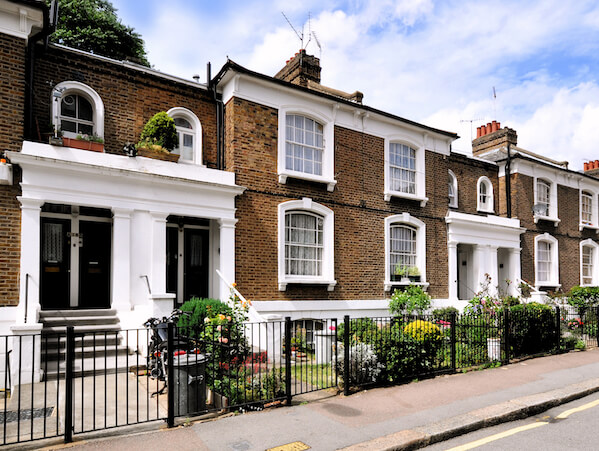The Property SSAS
Invest in property using your pension funds
A Property SSAS is a Small Self-Administered Scheme pension trust, independently established for the benefit of its members.

A tax efficient vehicle for investing in property.

What is a Property SSAS?
Unlike a SIPP, which is a personal pension, a SSAS is a corporate pension and is therefore regulated by HMRC and The Pensions Regulator. It enjoys the same benefits as traditional benefits, plus much more.
A Property SSAS must be started by the director of a trading company. The scheme can then have up to 11 members, who must be other employees and/or family members.
A Property SSAS is established to facilitate investment into property. By combining frozen and/or dormant pensions into one scheme, investment power and choice is elevated and funds are much easier to manage. Other scheme members may also transfer in their pension funds, again, increasing the pot and the choice of investments it can make. Each member retains the percentage portion of the pot, equivalent to the amount they put in, as the fund grows. As fees and charges are paid per SSAS, this means that individually, members are not managing and paying for a fund each, saving costs. All members benefit from growth of the fund and the tax advantages it affords.

Why a Property SSAS?
Property investment takes many forms. However, a common advantage that property has over investments such as the stocks and shares market, is that it is a tangible and understandable asset class. It does not share the same volatility and unpredictability that relies upon fund managers and specialist analysts to administer and coordinate.
Whether a seasoned property investor looking for additional funding, a novice keen to become involved in property or someone looking for a hands-off, limited time commitment investment, there are plenty of areas of property investment to suit your personal situation.

How does a Property SSAS work?
A Property SSAS works as a tax efficient wrapper, used to fund and grow your property investment portfolio, as well as continue to provide a growing fund for your retirement and family wealth.
A SSAS strategy must be decided upon. With this in place, the SSAS has potential to optimise tax efficiency and continue fund growth, meaning that investments and portfolio can increase. The effect of this is compounding growth of the fund, the portfolio and the business.
The Property investment strategies employed using your Property SSAS are tailored to suit an individual’s situation and goals. For example, strategies could include:
- Investment by your SSAS into commercial property.
- Growth of the company property portfolio via a loan to your company from your SSAS.
- A tax-free growth strategy, by selling your company business premises to your Property SSAS. Rent received by the SSAS is not liable for Income Tax or Capital Gains tax upon sale, within the SSAS. In addition, tax is saved by the company as the rent you pay to the SSAS is an allowable business expense. Year-end profit is reduced due to the funds paid to the SSAS, again reducing the year-end tax bill.

Why choose property over shares?
- Property has long been providing significantly greater returns than the average returns generated by the stock market.
- The options are more diverse.
- Risk levels are more understandable and tangible.
- Property is of real value that adds security to protect your funds.
- Property is a very simple asset class to understand, unlike shares and trading, so specialist knowledge of property or finance is not essential.
- Strategies can be tailored to suit the level of time and special knowledge you wish to invest.
More often than not, it could be concluded that the stock market not only achieves lower returns, but you are in a marketplace where the value of share or stock can be wiped away at any moment, leaving you with nothing. The value offered by property ensures that everything related to your pension is transparent.
What type of property can you invest in using a Property SSAS?
HMRC rules state that a SSAS can only invest in, or hold, commercial property. However, there are plenty of options for those who wish to invest in residential property, using their SSAS.

Commercial property
HMRC rules state that a SSAS can invest in commercial property directly. Examples of commercial property include land for development, high street premises, factories, car parks, hotels or pubs, care homes, designated student Halls of Residence, and much more.

Residential property
HMRC rules state that a Property SSAS can only invest in commercial property. Put simply, this means any property deemed to be habitable is classed as residential property and therefore, a SSAS may not hold or invest. A SSAS may buy or hold land or property for development, up until the point before it becomes habitable, at which point it must be sold to the company or a third party and released from the SSAS.
There are plenty of strategies that support you using your Property SSAS funds to ‘indirectly’ invest in residential property. Just a few examples include:
Loans to third party property developers
Using the unique SSAS loanback facility to loan to your company for residential property investment
Purchase of your business premises for tax efficiency and growth
Buying your business premises with a Property SSAS
This is an ideal and popular use of the Property SSAS, which entrusts the property to the pension. If later sold, the SSAS, as a pension, generally does not pay Capital Gains Tax on the profit. The premises are then owned by the SSAS, but as it is your Property SSAS, the asset is essentially still controlled by you.
There is no involvement with 3rd party landlords. Rent you pay for the premises is classed as a business expense, so your company is afforded Corporate Tax benefits on payments to the SSAS and the rent the scheme receives is not liable for Income Tax, all potentially helping to grow the pot.
Buying development land with a Property SSAS
A fantastic privilege of a Property SSAS pension is that it can purchase, own, and develop land and/or commercial property. This brings extensive tax advantages, including:
• Tax relief on any contributions paid into the SSAS, towards the land or property purchase
• Gains in value of the property are free from Capital Gains Tax within the SSAS
Land for residential property development may also be purchased by a Property SSAS and developed right up to the point of becoming habitable. This means the land ‘must be sold’ at market value, to yourself, your company or a 3rd party, prior to being deemed habitable, so prior to completion. At this point, a common strategy is to make a loan of up to 50% of the total Property SSAS fund, using the SSAS loanback facility, to use to fund the completion of the development.
It is important to ensure you have the correct support for your Property SSAS strategy to ensure it adheres to HMRC regulations and is optimised for long-term success. TLPI are experienced Property investment, Pension and Business experts. We offer a full SSAS service, which ensures that you are equipped with the tool, knowledge and ongoing support, for your Property SSAS.
FAQs
What are Lifetime Business Tax Plans?
A Lifetime Business Tax Plan is a packaged solution, exclusively for company directors, that enables them to solve multiple problems for their business and offers tools to:
- Solve the immediate threat of a 40% tax penalty on surplus company cash
- Transfer in company and pension cash to create significant liquidity
- Protect family wealth and assets
- Secure inheritance of company shares
- Achieve wider investment choices in a low to zero tax plan
- Create lifetime and beyond tax and inheritance strategies
- Fund your business
- Create succession plans
- Grow the retirement fund
- Invest in property
Lifetime Business Tax Plans encompass two major components; the Family Investment Company and the Small Self-Administered Scheme (SSAS). These exclusive tax mitigation plans also allow directors to transfer in former work pensions that are frozen or unmanaged. The transfer of company cash and former pension cash into one plan can create significant liquidity, providing wide investment choice in a low to zero tax plan.
Do HMRC recognise Lifetime Business Tax Plans?
Yes, because legislation has created the components.
- The Family Investment Company is recognised by HMRC as a standard way of preserving family assets for future generations whilst mitigating any tax.
- A company tax-exempt savings account, technically known as a SSAS (Small Self-Administered Scheme), is also recognised by HMRC as a standard form of investment savings vehicle for a company.
Both of these essential components of the Lifetime Business Tax Plan need to be registered with HMRC and annual compliance reporting is required to notify them of the assets held and the returns generated, albeit no tax will be due.
What is a Family Investment Company?
Recognised by HMRC, a Family Investment Company is a standard way of preserving family assets for future generations whilst mitigating any tax. As a special type of subsidiary or standalone company, this gives you the power to invest your company profits and surplus cash in property, stocks, and/or many other asset classes. An Family Investment Company has a high street bank account, similar to your current business account, and from this account you then control how the money is invested.
How do I make other contributions to a SSAS pension?
Contributions can be paid in as a lump sum or regular contributions. Employer contributions can also be made.
Can I combine multiple pensions into one SSAS pension?
Yes. This is just one of the great advantages of a SSAS pension. Consolidating your current pensions has many benefits, such as increasing your investment funds and choices, reducing costs as there is then only one set of fees/charges, and making your pensions easier to monitor.
What happens if a member of a SSAS dies?
An important question that many ask is ‘What happens if a member of a SSAS dies?’ Family members (and other dependants) can access the funds in a Small Self Administered Scheme (SSAS) if the member of the SSAS dies, but there are restrictions. It’s possible for a lump sum to be paid to a nominated beneficiary completely tax free, making an SSAS an excellent inheritance planning tool — if used properly.
However, this depends on specific circumstances, including whether or not the member has started drawing funds from the SSAS and how old the SSAS member was when they died.
Can a family member access my SSAS if I die before drawing funds?
Family members will be able to access a SSAS if a member dies before drawing the funds. The simplest option is to pay a lump sum to a person nominated in writing. Lump sums are typically free from all kinds of tax, including inheritance tax, income tax and pension tax. There is however, an exception: If contributions are made to the SSAS in the two years prior to death, as an attempt to reduce the SSAS member’s estate, this money may be liable for inheritance tax.
Alternatively, the amount can be paid as pension income to a dependant. In this case, income tax must be paid on the amount and the recipient must be a dependant.
If the SSAS member dies before drawing funds and was over 75, the benefits are paid out as if from a drawdown fund.
What is a drawdown fund?
A lump sum paid out from a drawdown fund is taxed at 55%. You can pay anyone nominated in writing from a drawdown fund.
Money from a drawdown fund may be paid as income pension to a dependant as normal, which would be subject to income tax.
If you have no surviving dependants, the money from a drawdown fund may be paid to a nominated charity, without any tax deductions.
What is the Lifetime Allowance?
The Lifetime Allowance is a limit on the amount that can be taken from a pension scheme, either as a lump sum or as retirement income, and can be paid without triggering an extra tax charge. The amount drawn from a SSAS — or paid as a lump sum to a beneficiary — is tested against the lifetime allowance. For the tax year 2023/24, the lifetime allowance in the UK is £1,073,000.
Previously, you would have had to pay a charge on any pension savings over this amount. However, in April 2023 the charge was removed, and the lifetime allowance is set to be completely abolished by April 2024.
What happens if a member of a SSAS dies while drawing a SSAS Pension?
Each scheme will have a different arrangement in place in the event a member of the SSAS dies while drawing their pension. It’s possible to arrange a lump sum, a continuing pension income for a fixed time, or a dependant’s pension.
If a lump sum payment is arranged, this will be taxed at 55% and is limited to 20 times the amount of the original pension (minus the amount already paid to the SSAS member).
What is a dependant’s pension?
A dependant’s pension can only be paid to someone who is a dependant of the SSAS member who died. A dependant may be a spouse, civil partner, common-law partner, a child aged 23 or under, anyone financially dependent on the SSAS member, or anyone who is dependent on the member due to physical or mental impairment.
A dependant’s pension is not tested against the Lifetime Allowance, but it is taxed at the appropriate rate of income tax to the recipient. A dependant can draw their pension in a number of different ways, including a capped drawdown, a flexible drawdown (only if they qualify for the scheme in their own right), a scheme pension, or a lifetime annuity.
How does a lifetime annuity work?
A lifetime annuity is a product that you can buy with your pension fund, which guarantees an income for life. If you’re a member of a SSAS and you’re drawing funds, you can use these funds to purchase an annuity. However, it’s vital you carefully check the terms of the annuity. When the recipient of an annuity dies, a lump sum may be paid to a dependant or there might be a minimum term of payments from the annuity to a dependant.
Want your questions answered by our expert SSAS and investment consultants?
Book your free, 15 minute no obligation call to find out more!
We get 5 stars from our Clients.
Business owners consistently rate us for our expertise, clarity, and genuinely supportive service.
Paul Reid
01.09.2024
I am nearly through the setup process for my SSAS. HMRC have taken about 12 weeks to approve the scheme. TLPI have been quick in getting the SSAS setup process started and have monitored the HMRC approval, responding to questions HMRC asked. TLPI prepared the new bank account application and pension transfer request, ready to submit upon HMRC approval, of the SSAS. Time to complete the setup is as short as possible with TLPIs proactive setup process.

Kenneth Irabor
21.08.2024
I am incredibly pleased with the service provided by TLPI in setting up my SSAS pension. The team was professional, knowledgeable, and supportive throughout the entire process. They guided me every step of the way, ensuring that everything was handled smoothly and efficiently. Thanks to their expertise and commitment, I've already seen an initial successful investment, which has given me great confidence in their abilities. I highly recommend TLPI to anyone looking for top-notch support in managing their pension and investments.
Tommy Meads
19.09.2024
We used Jordan @ TLPI to set up a family trust for our company to purchase a commercial property. He was efficient, informative and professional every step of the way. If there were any queries during the whole process they were resolved promptly. This was our first dealings with family trusts and TLPI's guidance during this time was highly valued! I would highly recommend them!

Liam Thomas
15.08.2024
Jordan looked after us incredibly well from start to finish. Dealing with tax can be a complicated process but Jordan simplfies everything and takes the time to answer all of your questions in detail. Would highley reccomend.
Richard Smith
11.07.2024
TLPI provide a brilliant service full stop. From our initial conversations they have been extremely helpful, diligent and thorough. I can't thank them enough for their advice, pointers and guidance that they have provided so far. They have made something which to me is extremely complex and confusing feel very straight forward.

Cris Emson
29.05.2024
I much appreciate the help and guidance TLPI have given me in setting up a Family Investment Company, and now we have reached the end of the first year we are now preparing the first set of annual accounts. Again TLPI are proving invaluable is giving help and advice, and I am sure none of this would be possible without their expert support.
Keith Jones
17.08.2023
Tlp have been fantastic with there advice and help in setting up my retirement plans , putting structures into place to help with future generational hand over of assets, great advice from Jordan Sharpe, easy to deal with and always on hand for help when needed, well done all, 👏 ✔️
Big thanks to sue for all your outstanding work, sue kept me updated with my pension transfer every step of the way, I would have no problem referring them on to anyone who needs sound advice and financial pension planning, thanks again for all your help,
Vipin Varsani
03.08.2023
Very helpful through the whole process and after.